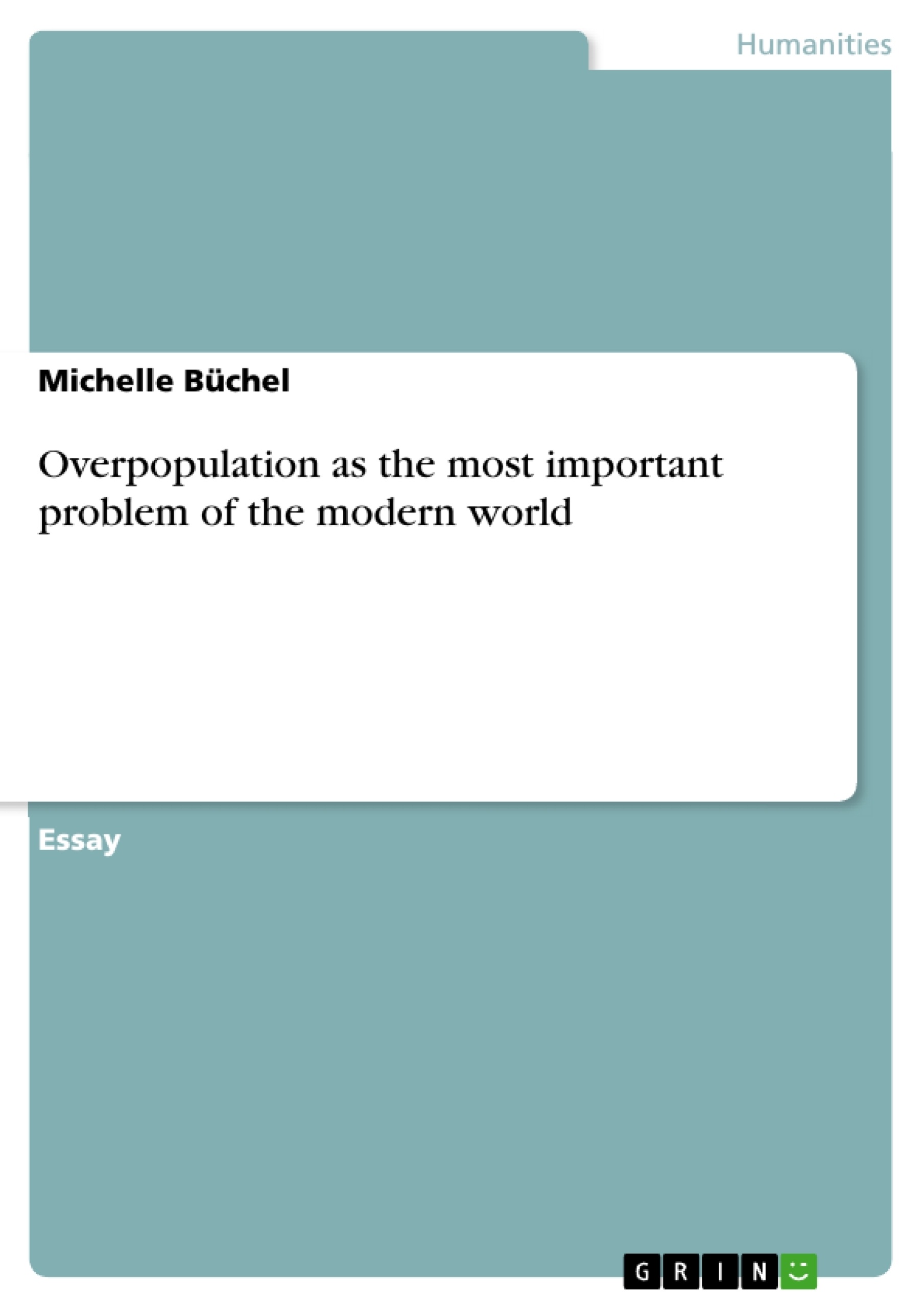According to the UN, the world population is expected to increase to almost 10 billion by the year 2050. Especially in the poorest countries of the world the population keeps growing rapidly. It might not be clear for everyone that overpopulation is the most important problem facing the world today, because there are many other important issues the world has to cope with. The reason why overpopulation is the most important one is that it is the cause of many other problems such as intensive livestock farming, climate change and habitat loss.
Table of Contents
- Overpopulation: The Most Important Problem
- Intensive Livestock Farming
- Global Warming
- Habitat Loss
Objectives and Key Themes
The objective of this text is to argue that overpopulation is the most significant problem facing the world today. It aims to demonstrate this by exploring the causal link between overpopulation and several critical issues.
- The connection between overpopulation and intensive livestock farming.
- The role of overpopulation in contributing to global warming.
- Overpopulation's impact on habitat loss and biodiversity.
- The ethical implications of overpopulation and its consequences.
- Potential solutions and the importance of education in addressing overpopulation.
Chapter Summaries
Overpopulation: The Most Important Problem: This introductory chapter establishes the central argument that overpopulation is the most pressing global issue. It highlights the projected population increase and explains how overpopulation acts as a root cause for other significant problems like intensive livestock farming, climate change, and habitat loss. The chapter briefly introduces these interconnected issues, setting the stage for a more detailed examination in subsequent sections.
Intensive Livestock Farming: This chapter delves into the consequences of intensive livestock farming, directly linking it to the issue of overpopulation. It highlights the detrimental effects on animal welfare, human health (due to antibiotic overuse), and the environmental impact. The chapter also addresses the counterargument that meat consumption, not population growth, is the primary driver, but refutes this by citing the continued increase in global meat demand. The chapter underscores the inextricable link between a growing population and the need for intensified agricultural practices.
Global Warming: This section examines the contribution of overpopulation to global warming. It explains how increased human activity, driven by population growth, leads to higher greenhouse gas emissions through fossil fuel burning, deforestation, and intensive farming. The chapter also discusses the effects of global warming, such as rising sea levels and habitat loss, and addresses the counterargument that changing human behavior, not just population size, is crucial in mitigating climate change. It acknowledges the complexity of the issue but emphasizes the undeniable contribution of overpopulation to the problem.
Habitat Loss: This chapter focuses on the link between overpopulation and habitat loss. It illustrates how the expanding human population necessitates the clearing of natural habitats for various needs, leading to a significant loss of biodiversity, particularly in tropical rainforests. The chapter again acknowledges counterarguments focusing on behavioral changes but emphasizes that even with changes in individual consumption patterns, the sheer scale of a growing population exacerbates the problem of habitat destruction. The chapter reinforces the idea that overpopulation is a significant contributing factor to this environmental crisis.
Keywords
Overpopulation, intensive livestock farming, global warming, climate change, habitat loss, biodiversity, meat consumption, antibiotic resistance, environmental impact, population growth, sustainable solutions, education.
Frequently Asked Questions: Overpopulation: The Most Important Problem
What is the main argument of this text?
The text argues that overpopulation is the most significant problem facing the world today. It explores the causal link between overpopulation and several critical issues, such as intensive livestock farming, global warming, and habitat loss.
What are the key themes explored in the text?
The key themes include the connection between overpopulation and intensive livestock farming, the role of overpopulation in contributing to global warming, overpopulation's impact on habitat loss and biodiversity, the ethical implications of overpopulation and its consequences, and potential solutions and the importance of education in addressing overpopulation.
What are the chapter summaries?
The chapters delve into the following: The introductory chapter establishes overpopulation as the most pressing global issue. The chapter on intensive livestock farming connects it to overpopulation, highlighting its detrimental effects on animal welfare, human health, and the environment. The global warming chapter examines overpopulation's contribution to greenhouse gas emissions. The habitat loss chapter focuses on how expanding human populations necessitate clearing natural habitats, leading to biodiversity loss.
How does the text address counterarguments?
The text acknowledges counterarguments such as the idea that meat consumption, not population growth, is the primary driver of environmental problems, and that changing human behavior is sufficient to mitigate climate change. However, it refutes these arguments by highlighting the continued increase in global meat demand and the significant contribution of population growth to environmental issues, emphasizing that even with behavioral changes, a large population exacerbates these problems.
What are the key solutions or approaches suggested in the text?
While not explicitly detailing specific solutions, the text emphasizes the importance of education in addressing overpopulation and implies that sustainable solutions and a change in consumption patterns are necessary to mitigate the impact of a growing population.
What are the keywords associated with this text?
Overpopulation, intensive livestock farming, global warming, climate change, habitat loss, biodiversity, meat consumption, antibiotic resistance, environmental impact, population growth, sustainable solutions, education.
What is the overall objective of this text?
The objective is to demonstrate that overpopulation is a root cause of several critical global issues and to highlight the interconnectedness of these problems.
What type of audience is this text intended for?
Given its academic nature and focus on analyzing themes in a structured and professional manner, the intended audience is likely academics, researchers, or students studying environmental science, sociology, or related fields.
- Quote paper
- Michelle Büchel (Author), 2017, Overpopulation as the most important problem of the modern world, Munich, GRIN Verlag, https://www.grin.com/document/385516




